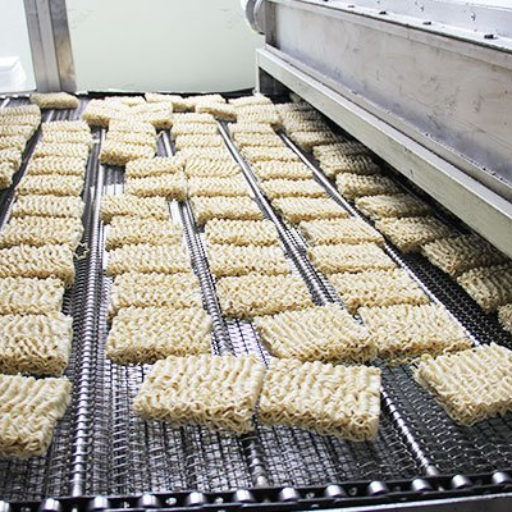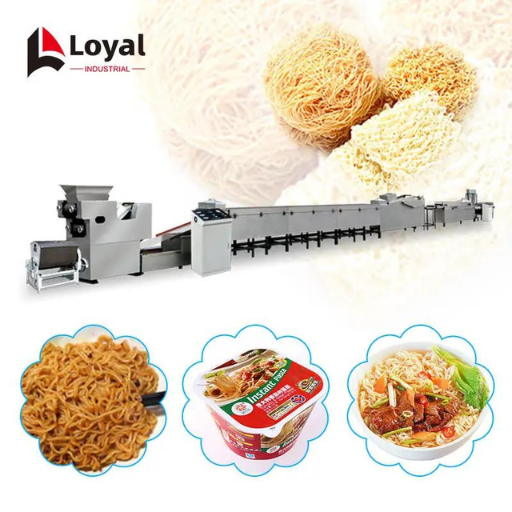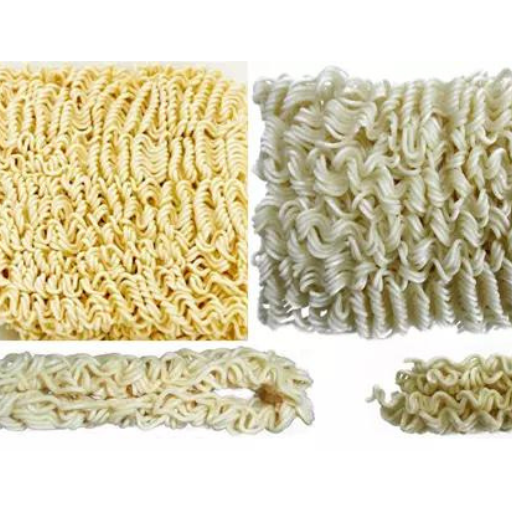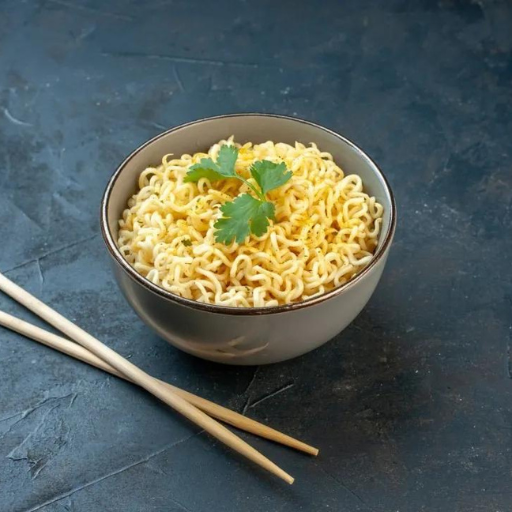Pasta has been a beloved staple in diets around the world for centuries, providing both comfort and culinary delight. However, the process of making pasta can be time-consuming and labor-intensive. Thankfully, advancements in technology have revolutionized the production of instant pasta, streamlining the process while maintaining quality and flavor. This blog delves into the cutting-edge innovations in instant pasta production lines, highlighting how state-of-the-art machinery and techniques are making pasta making more effortless and efficient than ever before. From automated mixing and kneading to precise shaping and drying processes, discover how these advancements are transforming the food industry and bringing instant pasta to your table faster and fresher.
What is an Instant Pasta Production Line?
The Secret of Making Instant Noodles
Several state-of-the-art technologies are implemented in the manufacture of instant noodles by using. It starts with a fully automated system that mixes and kneads doughs, giving them uniform texture and quality. Doughs are then pushed out of machines or rolled depending on the various pasta shapes desired while ensuring that they would be cut well by accurate machinery. Pasta drying is performed quickly to reduce its moisture content hence preserving it and extending its shelf life. At all stages of production line, sensoring and control panels monitor every step which assure optimum conditions as well as real time adjustments enabling highest performances and product quality.
How Does an Instant Noodle Production Line Work?
The process is organized in such a way that the instant noodle production line passes through different stages without any interruptions from one another beginning with ingredients preparation to obtain dough mixture. The combination includes wheat flour of different types with water as well as salts or kansui (alkaline mineral water). Rolling out the dough until it reaches acceptable thickness happens through the sheeting rolls. Cutting machines slice dough sheets into noodle strands in order to create noodles of different sizes.Steaming partially cooks these strands before placing them under frying pans or air driers that remove moisture which keeps noodles fresh for long period.In frying, oil is used to cook noodles whereas hot air is employed for dehydration during air-drying; both strategies ensure that when boiled in water, the noodles rapidly regain their original form.The whole automated process ensures consistency, safety and efficiency throughout.
Why Do We Need an Instant Pasta Line?
There are numerous benefits why manufacturers should use instant pasta lines. First, it increases production efficiency greatly by automating key steps, reducing manpower requirements while expanding output capacity Automation at this level also guarantees uniformity across batches thereby reducing human errors and maintaining product quality Furthermore, drying technologies can be integrated into an instant pasta line cutting short the drying period while prolonging the shelf life of the product without compromising its taste or nutritional content. Finally, such systems result in substantial savings due to optimized resource utilization, minimized wastages and overall reduction in production costs hence they are worth the investment for any pasta manufacturers.
How to Set Up Your Own Instant Pasta Production Plant
Instant Pasta Production Plant Components
Setting up an instant pasta plant encompasses the requirement for several key components, which ensures efficiency and high quality production. These include:
- Mixing and Kneading Machines: These machines are important in ensuring that the dough is prepared with the precise consistency and texture. Mixing does involve thorough combination of ingredients whereas kneading means to work the dough into a uniform mixture.
- Sheeter and Roller: This machine flattens it into thin sheets of the required thickness. Dough sheets can either be cut into noodle strands or they can be used as intermediate products.
- Cutting Machines: The cutting precision in these machines guarantees uniform noodle strands being cut out of dough sheets. In this way, stability in size and shape of noodles is upheld.
- Steamer: Partially cooking noodle strands so that they are ready for dehydration during the next stage by steamer may sound like an ordinary thing. This is necessary for preserving texture and nature of noodles during drying process before final end use application.
- Frying or Air-Drying Equipment: Depending on how noodles are made, one might use frying equipment or air-drying equipment to dehydrate them. Frying takes place when the noodles are immersed in hot oil while by air-drying I mean moisture being taken away by hot air. Regardless of choice, both methods will make sure that dried noodles have a very long shelf life hence quick rehydration is possible.
- Cooling and Packaging Systems: After drying, packaging has to take place after cooling down noodles at room temperature using modern systems that don’t allow moisture retention within them. Then automatic packing systems sorts out hygienic individual packets enhancing their durability time.
- Quality Control Equipment: Modern QA/QC systems supervise complete production starting from mixing raw materials to finished packs containing every type of paste. They ensure safety, taste as well as nutritive value expected from each portion.
These factors should be integrated into a well designed production line in order to optimize efficiency, ensure consistent product quality and facilitate large scale production required to meet market demands.
Machinery Catalogue and Specifications
Dough Mixers:
- Type: Industrial Spiral Mixers
- Capacity: 100-200 kg per batch
- Features: This includes things like variable speed control, automatic timer, stainless steel bowl, efficient mixing spiral arm.
- Supplier: Hobart with capacity ranging from 80 – 250 quarters.
Sheet Rollers and Cutters:
- Type: Hydraulic Pasta Sheeter and Cutter
- Capacity: Up to 500 kg/h
- Features: In this case it involves adjustable thickness settings, high precision cutting knives as well as automatic feeding mechanism.
- Supplier:LOYAL& Monferrina that have models including PNU 2 and PNU 4 with capacities of producing up to 100-300 kg/hour respectively.
Steamers:
- Type: Continuous Belt Steamer
- Capacity: Approximately 3000 kg/h
- Features: This is more about constant temperature control, the use of stainless steel in making it among other steam integration arrangements which are dependent upon the particular model chosen by the manufacturer.
- Supplier’s name: GEA Group whose models include Continuous Scraped-Surface or Multi-Tray Steamers.
Steps for Setting-Up a Production Line
Site Preparation:
- Ensure there is enough space for all machinery and workflow system.
- Install proper ventilation and drainage systems in order to avoid clogging of air supply pipes due to water leakage or flooding during operations.
- Set up utilities including water, electricity and compressed air according to the equipment requirements in addition to sprinkler installation in case fire outbreaks occur inside the plant facility at any given time.
Foundation and Placement:
- Where necessary constructs strong foundations which can withstand vibrations resulting from machines’ movements during operations.
- Create a layout whereby dough mixers come first followed by sheet rollers or cutters while packing equipment remains at the exit end point of the line thus allowing the best flow to be observed.
- Every machine should be level and tightened properly in order that during production they don’t move an inch.
Electrical and Plumbing Connections:
- Plug each machine into appropriate power socket while verifying its voltage and phase requirements.
- Connect all relevant water pipes as well as steam lines for dough mixers, steamers and other similar utilities of interest.
Integration of Conveyor Systems:
- Place conveyor belts to connect every part of the process together.
- Ensure machines are properly aligned so that materials can flow smoothly from one to another as required.
Calibration and Testing of Machines:
- Each machine should be calibrated as per manufacturer’s instructions.
- Make test runs to confirm the accuracy of machinery functions and calibrate where necessary.
Training and Safety Procedures:
- Staff have to be trained on operating and maintaining each unit of equipment.
- Put in place rules that can warn against, check or cure any operation hazards.
By doing this, you will be able to create a pasta production line which is both efficient in its operations as well as meeting industrial standards and goals.
Tips for Producing High-Quality Instant Pasta
Choosing the Best Technology for Your Noodle Line
When selecting the best technology for your noodle line, consider factors such as production capacity, product quality, and operational efficiency. Modern noodle production typically involves advanced extrusion, cutting, and drying technologies to ensure consistent product characteristics and taste.
Extrusion Technology:
- Look for sophisticated extruders that provide high precision and control over dough mixing and kneading processes. These machines should ensure uniformity in noodle thickness and texture.
Cutting and Shaping Machines:
- Opt for machines that offer flexibility in shaping and cutting noodles into different sizes and shapes, catering to diverse consumer preferences.
Drying Systems:
- Invest in advanced drying systems that maintain optimal moisture levels and prevent over-drying or under-drying, ensuring the longevity and quality of the noodles.
Automation and Integration:
- Consider fully automated and integrated solutions that streamline the production process, reduce manual intervention, and enhance productivity.
Quality Control Systems:
- Implement robust quality control systems including sensors as well as monitoring devices to keep a check on adherence to production standards quickly address any discrepancies when they arise.
By leveraging state-of-the-art technology in your noodle production line you can achieve superior efficiency, consistent quality, high rates of production ultimately satisfying market demands thus meeting consumers’ expectations.
Maintaining Consistent Flavour And Texture
To maintain consistent flavor & texture during noodle production follow these key practices derived from top industry insights:
Ingredient Quality:
- Use high-quality raw materials including premium flour & fresh water. Consistency in ingredient quality directly impacts final product’s flavor & texture.
Precision in Mixing:
- Ensure precise measurements & thorough mixing of ingredients Proper hydration of dough & uniform mixing contribute to a consistent texture.
Temperature Control:
- Maintain strict control over temperature settings during mixing extrusion drying processes. Appropriate temperature regulation helps achieving desired noodle firmness & bite.
Regular Testing And Adjustments:
- Implement regular sensory evaluations & texture analyses to monitor product consistency. Make necessary adjustments to recipes & processes based on test results.
Standardized Recipes And Processes:
- Develop and adhere to standardized recipes and production processes. Standardization minimizes variability and ensures each batch of noodles meets the same high-quality standards.
By focusing on these areas, you can ensure that your noodles consistently deliver the expected flavor and texture satisfying consumer expectations while upholding your brand’s reputation.
Automation and Efficiency in Instant Pasta Production
About Production Line Automation in the Present
The efficiency and productivity of modern noodle production lines are highly dependent on automation. Manufacturers can achieve greater accuracy and consistency in their processes through the incorporation of robotics, artificial intelligence, and the Internet of Things (IoT). Automated systems carry out monotonous tasks much faster and with higher precision than human operators do thus reducing waste and errors. Furthermore, automated functions allow for immediate supervision as well as data collection making it possible to perform emergency repairs that minimize downtime thereby guaranteeing continued industrial flow. These changes not only enhance quality but also lower manufacturing expenses considerably.
How Automatic Lines Improve Productivity
Faster and more accurate manufacture in automatic production lines leads to improved productivity. With advanced robotics plus automation technologies, these lines can handle mixing, cutting, cooking, packaging etc., with minimal human participation. The outcome is a reduction in cycle time plus less faulty workmanship. Additionally, low temperature drying methods including vacuum drying techniques preserve the nutritional value of foods and lengthen shelf-life of pasta products. For instance, smart sensors and IoT have been incorporated into pasta processing equipment hence easy monitoring with real-time adjustments leading to optimum performance which reduces wastage among others. This eventually translates into increased output volumes accompanied by consistent product standards hence profitability increases among producers.
Latest Innovations in Pasta Production Technology
Efficiency, sustainability as well as product quality are the main areas which new developments in pasta manufacturing technology target at achieving. One major development is through using advanced extrusion technology which ensures that pasta texture is exactly what it should be so that product remains consistent all through its lifespan until it reaches customers’ tables for serving purposes. Another example involves dryers that use low temperatures or vacuum systems to preserve nutritional values while increasing shelf lives at the same time. Moreover there has been an adaptation of sustainable practices across the industry such as recycling packages or using alternative sources of energy on top of meeting environmental requirements from consumers who demand eco-friendly products. These modernization efforts collectively enhance the efficiency, sustainability and quality of pasta making process.
Packaging Solutions for Instant Pasta
Getting the Right Packaging for Dry Pasta
Packaging dry pasta right on is a matter that I always consider under several important aspects. The packaging should primarily be safe to moisture and impurities which is why I mostly prefer using materials with high levels of barriers such as plastic or multilayered materials. Also, the packaging needs to be tough enough in order to cope with handling and transportation without causing damage to pasta inside it. Moreover, I look at how convenient it will be for my customers to use the package including those with resealability options that can help keep the product fresh after opening it. Lastly, whenever possible I choose eco-friendly packing solutions that satisfy consumer demand for sustainable products and contribute to environmental preservation.
How to Keep Freshness and Flavour
To ensure freshness and flavor of instant pasta, storing it in an air tight container that prevents contact with air and moisture which may lead to becoming stale and tasteless is one of my priorities. At the same time, I store this type of products in a cool dry place where direct sunlight cannot reach them so as not degrade their quality by heat and humidity. During cooking, I make sure that only fresh ingredients are used while avoiding overcooking which would interfere with its texture as well as taste. Vacuum sealed packages when available enhance shelf life while maintaining the original taste and nutrition value of such pasta.
Eco-Friendly Packaging Options
When considering eco-friendly packaging options for instant pasta, a number of sustainable materials are currently being preferred. Biodegradable plastics made from sources like corn starch or sugarcane are good alternatives since they decompose naturally thus minimizing plastic waste production. Additionally, recyclable paper board packages can serve just as well offering a strong protective barrier plus easy recycle ability features thereof. Similarly, compostable materials can also be explored which do not harm the environment but eventually break down into soil again instead of remaining in our landfills indefinitely. While keeping up with the modern sustainability norms in terms of my packaging options, I also ensure my product is fresh and protected.
Frequently Asked Questions (FAQs)
Q: What makes the Storci Instant Pasta System unique?
A: With its advanced technology, The Storci Instant Pasta System is different since it guarantees highly homogeneous mixtures, an optimal drying process carried out with a high quality dryer, and its compatibility with diverse kinds of pasta as well as mix-ins. This system is developed for specific purposes to enable production of graded instant pasta.
Q: Can the Storci Instant Pasta System produce traditional dry pasta?
A: The Storci Instant Pasta System has been designed for making instant pasta but can be modified slightly to produce traditional dried pasta. It can hence be used in various applications to make a range of pastas that are necessary in the market.
Q: How does the production line handle the addition of sauce?
A: There is a seamless integration of sauce into pasta on this production line. It thus becomes very easy to achieve a convenient final product and tasty at the same time. Technology enables uniformity in distribution of sauces.
Q: Is the Storci Instant Pasta System compatible with existing lines for the production of pasta?
A: Yes, it is possible in most cases as there exist few exceptions when speaking about compatibility or adaptability between SPIPS and actual lines for making pasta. It’s cost-effective due to its flexibility in regards to other type of pastas requirements.
Q: What are the benefits of using the Storci Instant Pasta System for ready meals?
A: Some qualities include fast throughput; consistent product quality; ability to combine different findings such as pastas, which all make them sumptuous and ready-to-eat delicacy.
Q: How does Storci technology ensure pasta is healthy?
A:The use of our technologies ensures that cooking and drying processes are controlled; therefore nutritional value is preserved in our cooked noodles. Moreover, ingredients used are premium class while static drying method aids in improving the health benefits of the noodles.



















